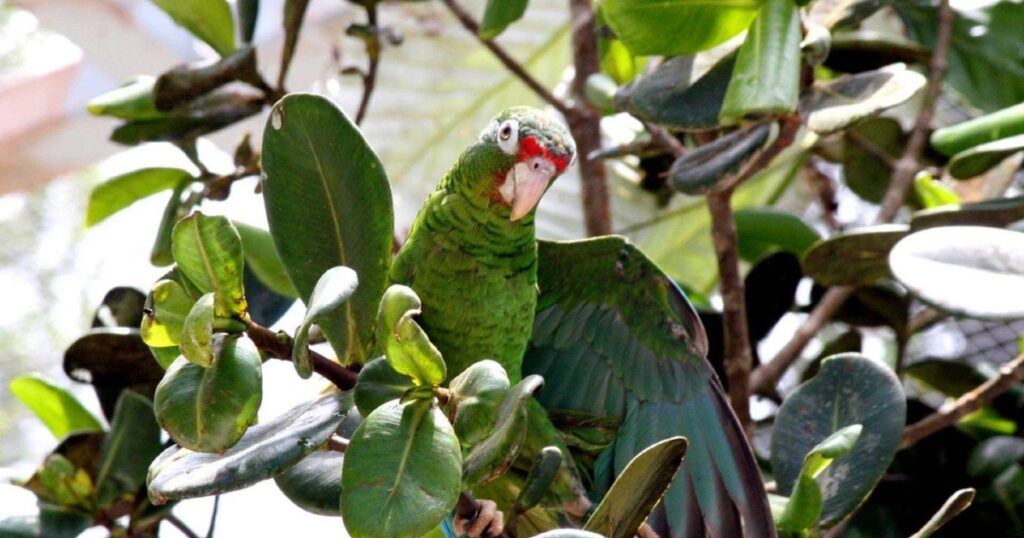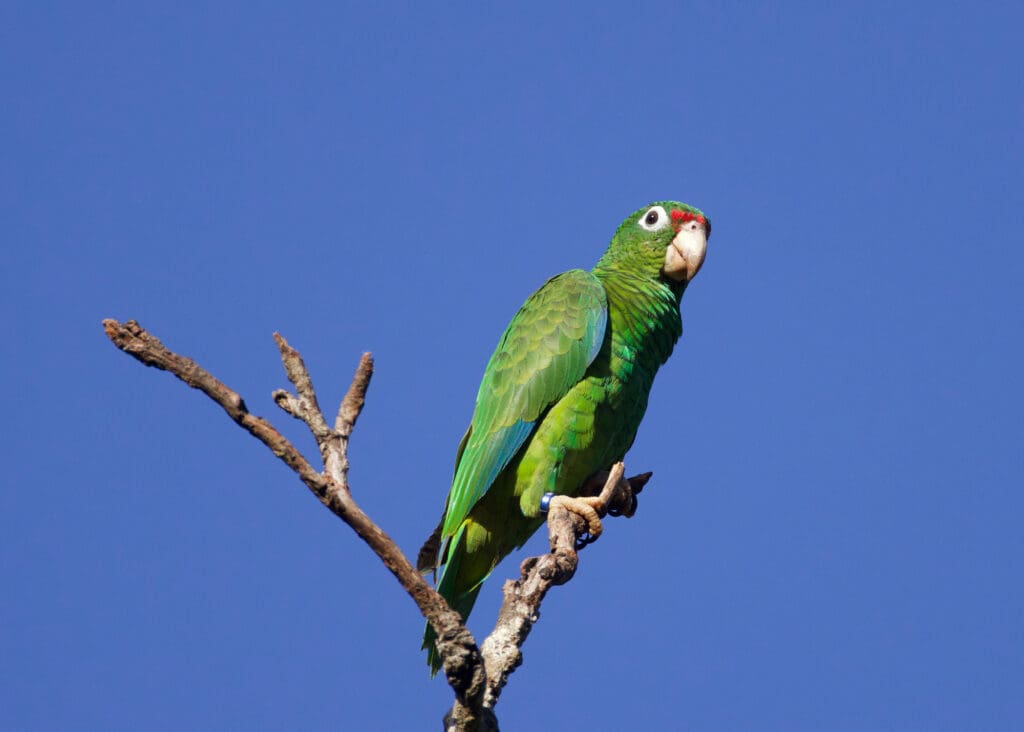
The Puerto Rican Amazon (Amazona vittata), also known as the Puerto Rican parrot, is a critically endangered species of parrot endemic to Puerto Rico. Here’s an overview of this remarkable bird:
🐦 Basic Facts
- Scientific name: Amazona vittata
- Common names: Puerto Rican parrot, Iguaca (from the Taíno word iguaca)
- Family: Psittacidae (parrots)
- Length: About 28–30 cm (11–12 inches)
- Weight: 250–300 grams
- Lifespan: Up to 30–40 years in captivity
🌿 Habitat
- Historically found throughout Puerto Rico.
- Now mostly confined to protected areas such as:
- El Yunque National Forest
- Río Abajo State Forest
- Maricao State Forest (reintroduction area)
It prefers tropical forests with a mix of mature trees for nesting and feeding.
🍃 Diet
- Primarily frugivorous (fruit-eating), also eats:
- Seeds
- Nuts
- Leaves
- Flowers
- Bark
🪺 Breeding
- Nest in tree cavities during the breeding season (February–June).
- Lay 2–4 eggs.
- Both parents help care for the young.
🚨 Conservation Status
- IUCN Status: Critically Endangered
- Population: Around 100–200 individuals in the wild (as of recent counts, which may vary)
- Threats:
- Habitat destruction
- Hurricanes (e.g., Hurricane Maria in 2017 devastated wild populations)
- Predation by invasive species (e.g., rats, mongooses)
- Low genetic diversity
🛡️ Conservation Efforts
- Captive breeding programs have been key in saving the species.
- The U.S. Fish and Wildlife Service, Puerto Rico Department of Natural and Environmental Resources, and other partners manage programs.
- Reintroduction projects are ongoing in protected areas.
- Monitoring via radio and GPS tracking.
🌟 Cultural Significance
- A national symbol of Puerto Rico.
- The call “iguaca” is a deep part of Taíno and Puerto Rican heritage.
- Featured in stamps, logos, and educational programs across the island.




Here are some beautiful photos of the Puerto Rican Amazon (Amazona vittata), showcasing this vibrant and critically endangered parrot in its natural and conservation settings.
Let me know if you’d like larger versions, photos of chicks in nests, or images from the aviaries and reintroduction efforts.